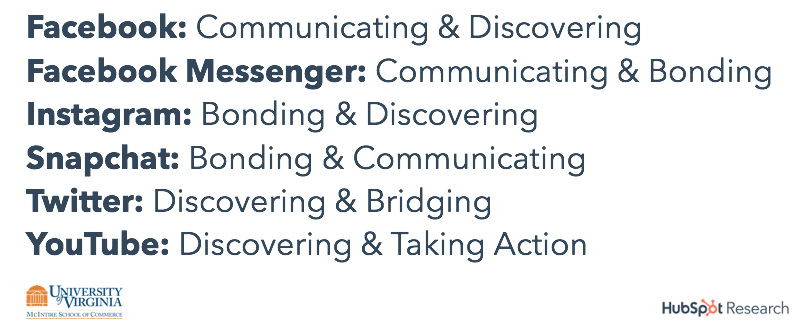Rethinking Social Media Marketing: How to Use a Behavior Based Approach For Content on Social Media
Companies today are grappling with how to best market to consumers on various social networks. How can they better identify the types of content that will perform the best on each network? To answer that question (and better inform HubSpot’s own social strategy), HubSpot Research and the University of Virginia teamed up to survey consumers and analyze existing branded content to produce a framework that helps brands identify the types of content that performs best on a given social network. This post is an overview of a longer report published by HubSpot Research.
Understanding Behavior and Content Options
We first needed to understand the primary behaviors people take on each social network – after all, people use Twitter very differently from a network like Instagram or YouTube. Through consumer surveys, we identified five key behaviors: bridging, bonding, communicating, discovering, and taking action. Based on our data, we tied the most prevalent behaviors found on each of the six social network we studied (see figure 1).
Figure 1. Prevalent Behaviors on Social Networks

We understood behavior; now we needed to categorize the themes of content that we typically find on social media. Our research identified eight distinct categories of content commonly made by brands (see figure 2). These content categories build on HubSpot’s existing social content framework in which content broadly reflects consumers’ identity (Identity content), provides information to consumers (Info/Utility content), and elicits an emotional response from consumers (Emotional content). A given piece of content may have characteristics of multiple categories, but may be more associated with one of the eight categories than others.
Comments
Post a Comment